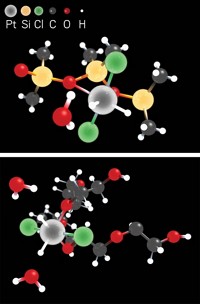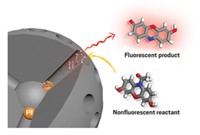Advertisement
Grab your lab coat. Let's get started
Welcome!
Welcome!
Create an account below to get 6 C&EN articles per month, receive newsletters and more - all free.
It seems this is your first time logging in online. Please enter the following information to continue.
As an ACS member you automatically get access to this site. All we need is few more details to create your reading experience.
Not you? Sign in with a different account.
Not you? Sign in with a different account.
ERROR 1
ERROR 1
ERROR 2
ERROR 2
ERROR 2
ERROR 2
ERROR 2
Password and Confirm password must match.
If you have an ACS member number, please enter it here so we can link this account to your membership. (optional)
ERROR 2
ACS values your privacy. By submitting your information, you are gaining access to C&EN and subscribing to our weekly newsletter. We use the information you provide to make your reading experience better, and we will never sell your data to third party members.
Analytical Chemistry
Method Separates Hybrid Nanoparticles
ACS Meeting News: Chromatographic method purifies complex magnetic nanostructures
by Amanda Yarnell
September 8, 2011

A magnet-assisted chromatographic method may make it easier to purify certain complex nanoparticles, according to work presented on Aug. 31 at the American Chemical Society national meeting in Denver.
Such nanostructures—in which tiny magnetic particles are stuck to other particles to form complexes that resemble dumbbells or flowers, for example—are under investigation for medical, catalytic, and diagnostic uses. But many of the reactions researchers rely on to make the multipart particles are complex and can result in mixtures of products that can be difficult to analyze and separate effectively.
In the Division of Inorganic Chemistry, Jacob S. Beveridge described his team’s efforts to show that differential magnetic catch-and-release, a chromatographic method they developed a few years ago, can be used to separate and purify such complex mixtures of products. Beveridge is a graduate student at Penn State University in chemist Mary Elizabeth Williams’ lab. The work, which will soon appear in Angewandte Chemie, was performed in collaboration with Penn State chemist Raymond E. Schaak.
“Too many authors do not expend much effort in separation-purification of their nanoparticle products, including separation-purification of hybrid nanoparticles,” analytical chemist Royce W. Murray of the University of North Carolina, Chapel Hill, told C&EN. “This work addresses that problem for magnetically functional nanoparticles.”
Beveridge’s chromatographic method complements the few existing post-synthetic purification methods for such particles, including high-gradient magnetic separation, which separates on the basis of magnetic moment, and density gradient centrifugation, which separates on the basis of size.
He showed that the method, which separates particles both by size and magnetic moment, can be used on both the analytical and preparatory scales to purify nanoparticles consisting of a magnetic iron oxide core surrounded by three gold nanoparticles. Such particles might serve a dual purpose for medical applications: The gold could anchor drugs and the iron oxide could function as a contrast agent for magnetic resonance imaging.
In the best cases, syntheses can be optimized to produce nanoparticles that are sufficiently monodisperse in size and shape for the application at hand, according to nanoparticle expert Catherine J. Murphy of the University of Illinois, Urbana Champaign. It does remain difficult to produce pure multipart hybrid nanoparticles, she said. Still, Beveridge’s method remains limited to magnetic nanostructures, she added.
Aiming to broaden the kinds of particles that they can purify, Williams and coworkers are now trying to develop complementary chromatographic methods that separate particles on the basis of size and charge.





Join the conversation
Contact the reporter
Submit a Letter to the Editor for publication
Engage with us on Twitter